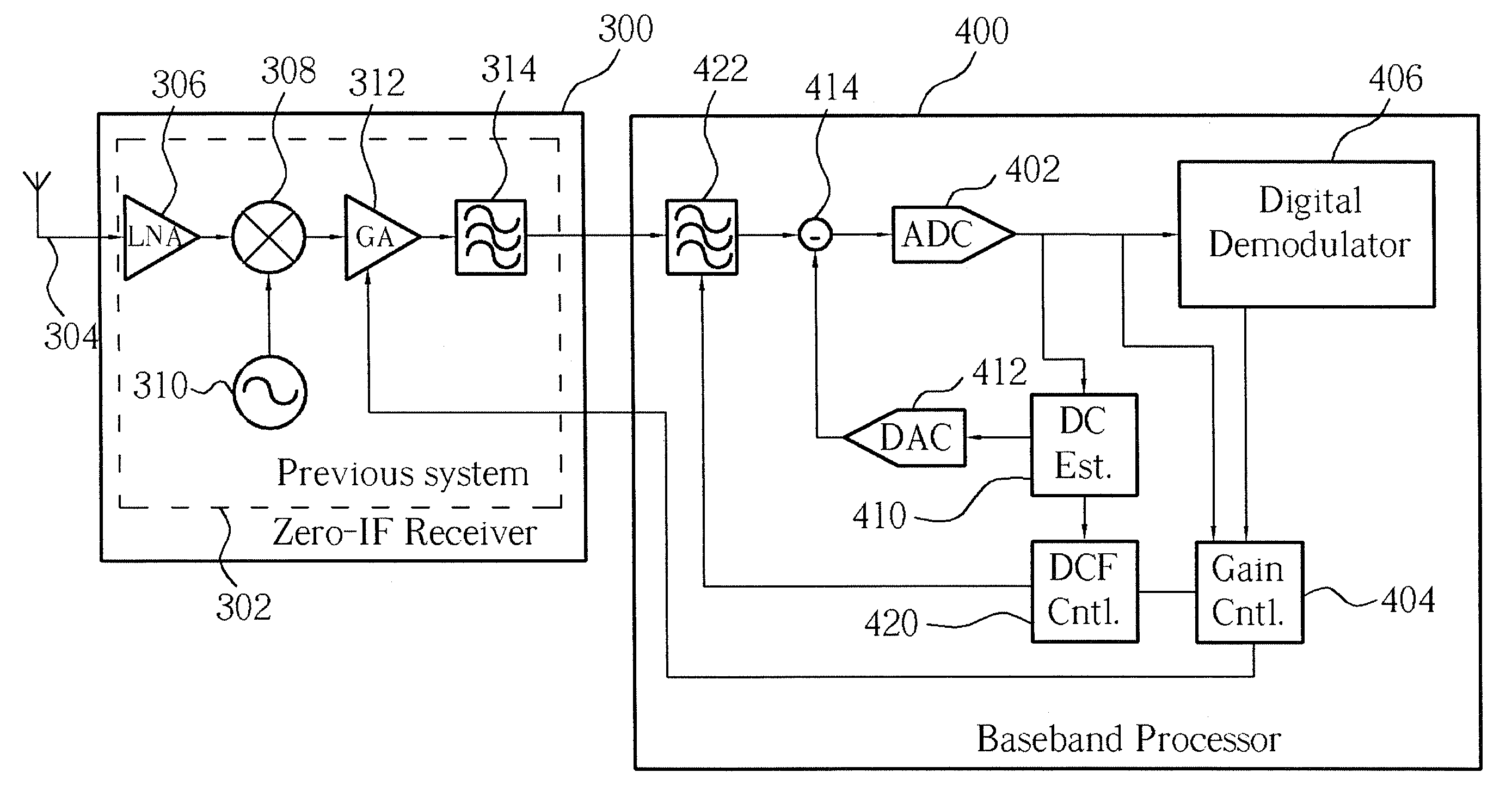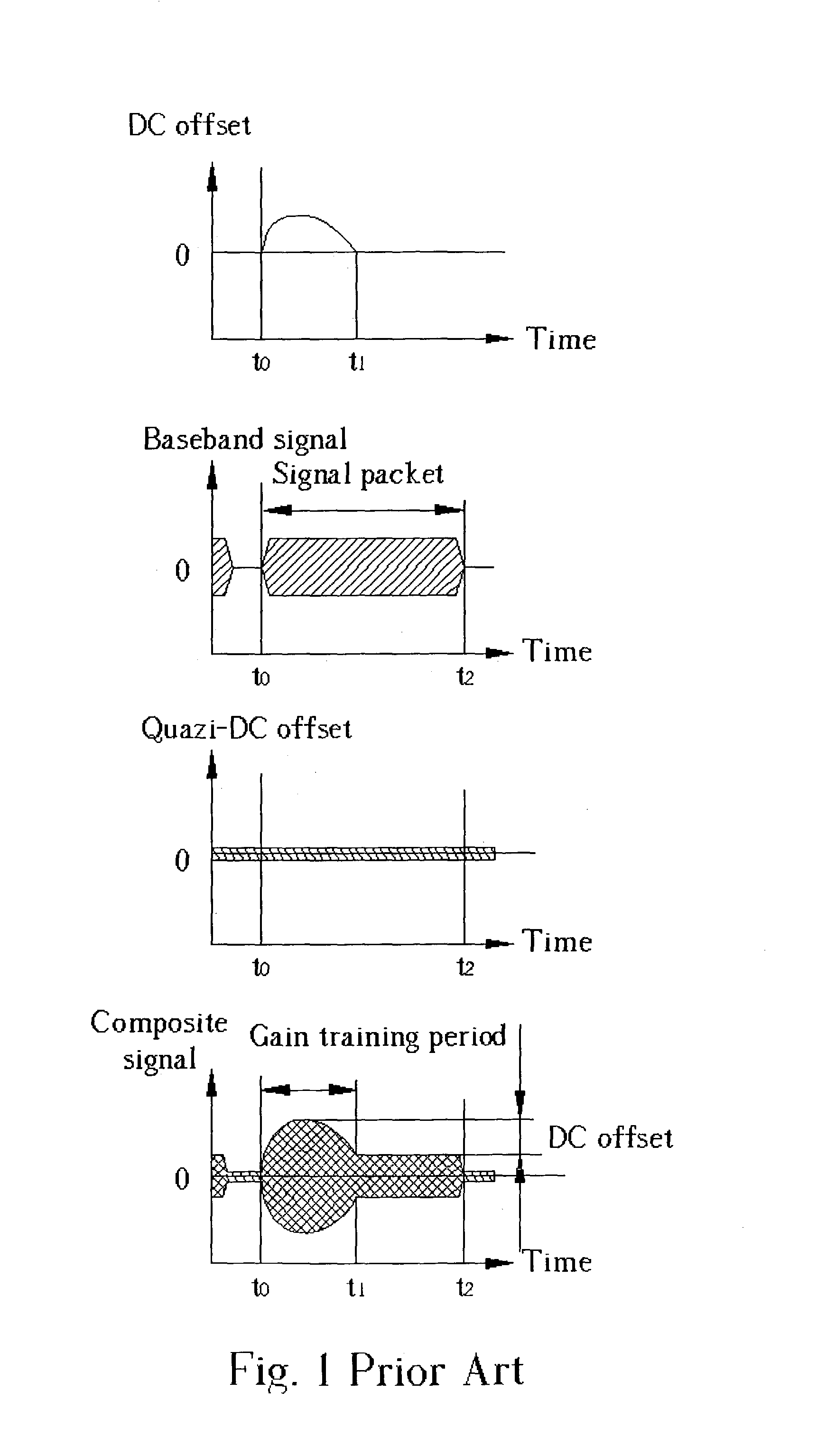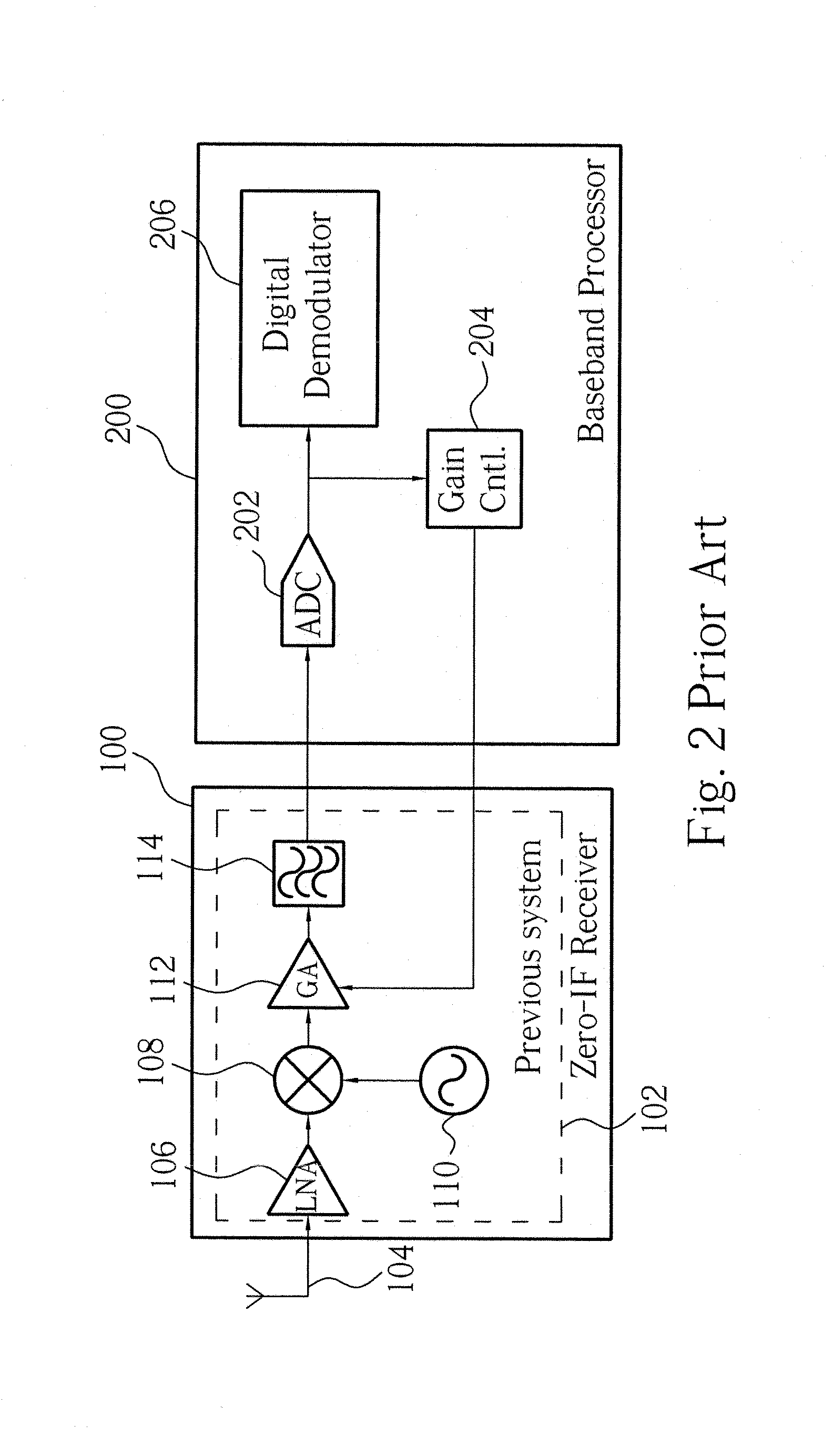Device for WLAN baseband processing with DC offset reduction
a technology of dc offset reduction and baseband processing, which is applied in the direction of dc level restoring means or bias distortion correction, digital transmission, baseband system details, etc., can solve the problems of generating unwanted dc offsets for zero-if receivers, consuming a lot of dc offset,
- Summary
- Abstract
- Description
- Claims
- Application Information
AI Technical Summary
Benefits of technology
Problems solved by technology
Method used
Image
Examples
Embodiment Construction
[0025]Please refer to FIG. 3 showing a block diagram of a combination of a zero-IF receiver 300 and a baseband processor 400 according to the present invention. The signal connection between the zero-IF receiver 300 and the baseband processor 400 can be either differential or single-ended connection. For simplicity of comparison between the present invention and the prior art and focusing on the novelty of the present invention, only the single-ended connection will be illustrated in the following. Nevertheless, the present invention can apply to the differential connection. The zero-IF receiver 300 in FIG. 3 is exactly the same as the zero-IF receiver 100 in FIG. 2 except that index numbers of the components are reassigned. The function of each component in the zero-IF receiver 300 is the same as that in the zero-IF receiver 100.
[0026]The baseband processor 400 for processing an intermediate analogue signal received from a previous system 302 comprises a programmable filter bank 42...
PUM
 Login to View More
Login to View More Abstract
Description
Claims
Application Information
 Login to View More
Login to View More - R&D
- Intellectual Property
- Life Sciences
- Materials
- Tech Scout
- Unparalleled Data Quality
- Higher Quality Content
- 60% Fewer Hallucinations
Browse by: Latest US Patents, China's latest patents, Technical Efficacy Thesaurus, Application Domain, Technology Topic, Popular Technical Reports.
© 2025 PatSnap. All rights reserved.Legal|Privacy policy|Modern Slavery Act Transparency Statement|Sitemap|About US| Contact US: help@patsnap.com



